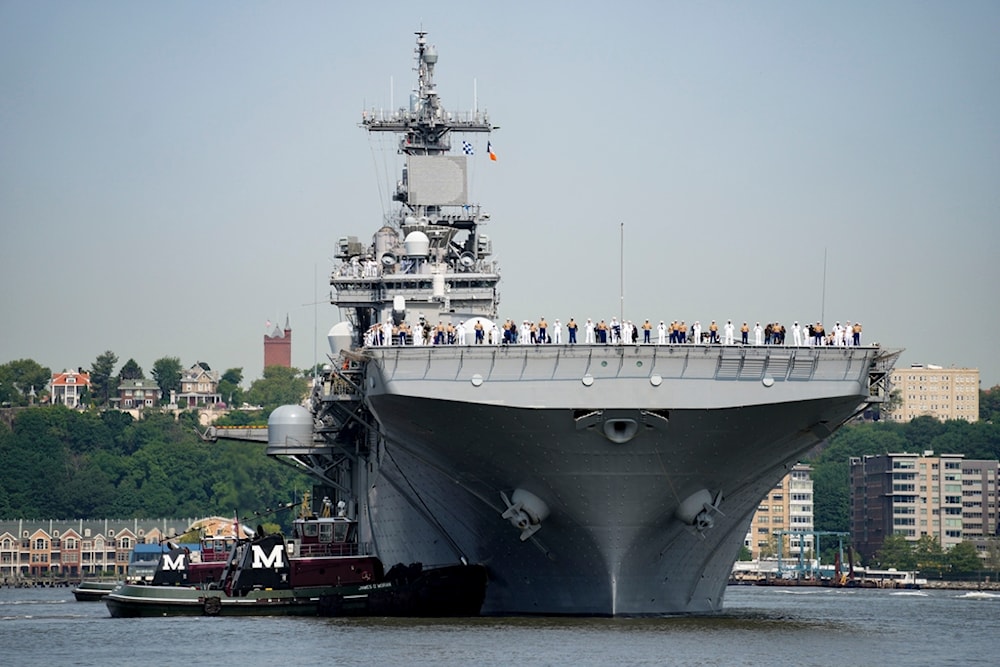US Navy faces crisis as only 13 of 32 amphibious ships ready for duty
Amphibious ships, which are critical for transporting and deploying troops, vehicles, and equipment, play a vital role in Marine Corps operations.
-

Sailors and military service personnel arrive on the USS Wasp amphibious assault ship on the Hudson River during fleet week, May 24, 2023, in New York. (AP)
The US Navy and Marine Corps are raising alarms over the deteriorating state of the amphibious fleet, with less than half of the vessels currently available for deployment. The ongoing crisis is compounded by shipbuilding delays, maintenance backlogs, and workforce shortages, raising concerns about the military's ability to sustain its maritime operations.
Speaking before the Senate Armed Services Committee on Wednesday, General Christopher Mahoney, Assistant Commandant of the Marine Corps, revealed that the number of operational amphibious ships has dropped to just 13 out of 32. "We are very concerned with the condition of the amphibious fleet and the availability of the amphibious fleet. This morning, I check it every morning, there were 13 of 32 amphibious ships available," Mahoney stated.
Amphibious ships, which are critical for transporting and deploying troops, vehicles, and equipment, play a vital role in Marine Corps operations. Mahoney noted the importance of maintaining these vessels for their full intended lifespan instead of decommissioning them prematurely.
However, the shipbuilding sector responsible for replenishing and maintaining the fleet is struggling to keep pace. Brett Seidle, Assistant Secretary of the Navy for Research, Development, and Acquisition, admitted that the industry is facing severe production delays, with new ship deliveries lagging by up to three years. A key factor behind these delays is a growing labor shortage—shipyards such as Newport News Shipbuilding and General Dynamics' Electric Boat have experienced worker attrition rates doubling since the pandemic, with 20% of hourly workers leaving annually.
Read more: US nuclear submarine fleet declines as production slows, expert warns
In addition to shipbuilding setbacks, a January report from the Government Accountability Office (GAO) revealed deep-rooted issues affecting the Navy's ability to maintain its combat surface ships. The report identified critical shortages of spare parts, a lack of trained personnel, and persistent maintenance delays, all of which are undermining fleet readiness.
The crisis has also drawn attention to China's dominance in the global shipbuilding sector, which now controls over 50% of the market, while the US share has dwindled to just 0.1%. Experts warn that this disparity not only threatens America's economic competitiveness but also its national security, as China rapidly expands its naval capabilities.
In response to mounting concerns, President Donald Trump has proposed a comprehensive plan to revitalize US shipbuilding. The plan includes establishing a dedicated White House office to oversee shipbuilding initiatives, implementing tax incentives to boost domestic production, and enhancing workforce training to address skilled labor shortages.

 3 Min Read
3 Min Read








